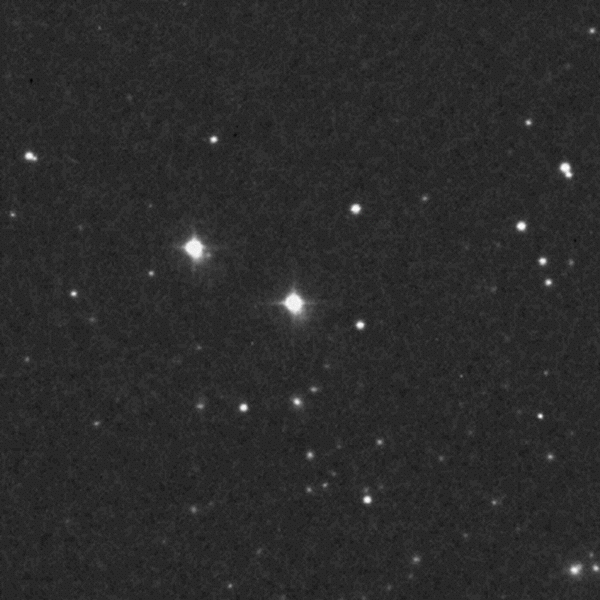
Return to Short Projects and Targets of Opportunity
Careful measurement over many years reveals that all stars are moving independently through space and this results in slow changes in their position relative to the earth.
Proper Motion is a vector, that is it has both a magnitude and a direction. The magnitude has units of arc seconds per year and the direction is expressed in degrees with 0 degrees being north, 90 degrees being east and so on. Most catalogues present variable star information in the form of the magnitude of the motion in both right ascension and in declination since these are at right angles to each other.
For a pair to be considered a binary the two components would be expected to show very similar proper motion. Reliable and up-to-date results are not available for all stars but where such information is used it is clear that although many systems previously reported as binaries are in fact "just" double stars there are also previously unlisted binary stars just waiting to be identified. There does not appear to be anything in the latest version of the standard catalogue to suggest that this pair has been reported before

These two images were taken in May 1950 and in May 1999 - note the changing positions of the two components in relation to the background stars but also that they don't move in relation to each other - hence "common proper motion pair".

In collaboration with the Remote Astronomical Society Observatory
Martin Nicholson - Daventry, United Kingdom.
This page was last updated on November 15th 2007.